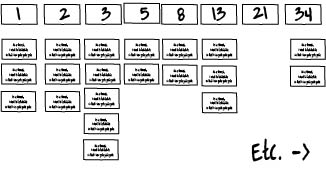I was recently asked if engineers or other members of the scrum team would get value from a Certified Scrum Product Owner workshop.
Our Certified Scrum Product Owner workshops are designed to build knowledge and skill in three main areas:
- How scrum works and how to use it effectively
- How to build shared understanding of the requirements between stakeholders and the development team so the team builds the right thing
- How to identify and focus the team’s efforts on the most valuable deliverables
These are topics every member of a high-performing team should be versed in. Having engineers participate in product owner training helps them understand the context within which they do their engineering work, and helps them understand how to interact better with product owners around topics such as the business value of paying down technical dept.
For products that are extremely technical, engineers usually work closely with the product owner in order to define and refine the user stories. If the engineers lack story writing skills, then the resulting ‘stories’ are often little more than a restating of the architecture and technical design. The problem with this is that many of these ‘technical stories’ need to be implemented before there is anything meaningful to the stakeholders. Once those engineers have been exposed to the story writing and splitting techniques in our workshop, they are better able to define/refine stories in such a way that they stay pertinent to stakeholders at all times.
I’ll also point out that all scrum masters should take the product owner training, as scrum masters are the scrum experts who provide guidance to the scrum team and the greater organization. Frequently, the scrum master will be called upon to coach the product owners in the various skills needed to be effective in product owner role.
Cheers,
Chris

 How long should we time box the prep time before the first sprint starts – i.e. the time used to decide on a product that has a good chance of meeting the goals, make effort and business value estimates and get the top product backlog items to be sprint ready?
How long should we time box the prep time before the first sprint starts – i.e. the time used to decide on a product that has a good chance of meeting the goals, make effort and business value estimates and get the top product backlog items to be sprint ready? Here’s an interesting question that just came in from a local scrum master. It’s about estimating tasks and management’s role in choosing the practices that a scrum team uses.
Here’s an interesting question that just came in from a local scrum master. It’s about estimating tasks and management’s role in choosing the practices that a scrum team uses. How long should our sprints be? This is a question I am frequently asked by new scrum masters and scrum teams. Here is how it showed up in my in-box recently.
How long should our sprints be? This is a question I am frequently asked by new scrum masters and scrum teams. Here is how it showed up in my in-box recently. A common complaint I hear from scrum teams: We didn’t finish all the stories we committed to deliver in the sprint. While there are many reasons for this, one often-overlooked one is: The user stories were not ready to enter the sprint in the first place. The solution is for the scrum team to decide which stories are sprint ready before the sprint planning meeting even starts.
A common complaint I hear from scrum teams: We didn’t finish all the stories we committed to deliver in the sprint. While there are many reasons for this, one often-overlooked one is: The user stories were not ready to enter the sprint in the first place. The solution is for the scrum team to decide which stories are sprint ready before the sprint planning meeting even starts. Many well-intentioned managers have a fundamental misunderstanding about velocity. They think it is a measure of how hard the scrum team is working or how much they are producing. Neither of these is correct. Velocity is a tool for predictability.
Many well-intentioned managers have a fundamental misunderstanding about velocity. They think it is a measure of how hard the scrum team is working or how much they are producing. Neither of these is correct. Velocity is a tool for predictability.